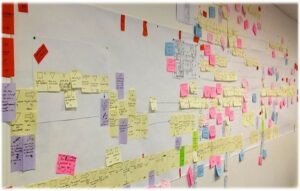CloudOps, or cloud operations, is the evolving set of best practices based on the DevOps Principles, that allow modern and legacy applications and their platforms to operate at the speed of business, regardless if they are on a public cloud, or a private data center. Most companies understand that if they want to just maintain their competitiveness in today’s swiftly changing world, they can’t ignore beginning a digital transformation. Many try to jump-start their transformation by diving headfirst into CloudOps and assume they can use the same business transformation practices that they have used previously. Only to realize that many of the old tried and true transformation habits don’t seem to work as well, this time around.
In order to create an effective digital transformation and move towards CloudOps, it is important to understand the main influencers to the fundamental principles behind CloudOps. Those influencers are the DevOps movement, the Agile Software Development manifesto, and the Lean movement.

The lack of understanding and visibility of how work (change) flows through the IT department, or, more commonly doesn’t flow, across the various groups to deliver value is a fundamental obstacle to implementing CloudOps. This lack of visible flow is currently a major contributor to the poor performance of the IT Department, poor business decisions, and overall less than optimal work environment. Conflicting priorities and interdepartmental tension are common occurrences when an IT department attempts to operate without a clear understanding of the flow of work required to create the business outcomes. What is needed is a sequence of activities the organization needs to complete in order to deliver a change into production. That change can be an application code change, an infrastructure change, or even a process change. From the Lean movement we can leverage the practice of creating a Value Stream map to visualize the flow of activities. A Value Stream is the sequence of activities required to design, product, and deliver a good or service to a customer.
Value Stream Maps offer a holistic view of how work flows through the entire system. They provide an effective means to establish a strategic direction for making improvements. Without a Value Stream Map, when trying to implement CloudOps it is too easy to jump into the weeds and design microlevel improvements before the entire work system (the macro picture) is fully understood. That leads to sub optimization of the end to end flow. Which gives us our first step towards our CloudOps journey.
The ability to visualize non-visible work performed as an IT change is processed thru the IT department is an essential first step towards implementing CloudOps.
Once you have a visible flow of work, it can be tempting to jump in and start optimizing the flow by removing barriers and eliminating obstacles. All too often IT departments have been driven by reducing costs, so it is natural to continue with that approach when trying to optimize the Value Stream. It is the primary, and maybe only, metric the IT department can confidently measure, so it tends to be the sole focus.
But Value Stream Maps also lend themselves to creating data-driven strategic improvements. Measuring the overall value stream performance and identifying the barriers and process breakdowns as the work flows thru the value stream is a very powerful way to drive continuous improvement, while also making sure that you don’t over improve a process. By offering additional metrics, you get a better view of the performance of the process, and multiple options toward improving it based on the desired business outcome. Which gives us our second step in our CloudOps journey.
You can’t improve what you don’t measure. The Process Cycle Efficiency of an IT change is metrics you can leverage form a Value Stream Map to continuously improve into a CloudOps operating model.
Now that you have a visible flow, and metrics to prove how you are improving the flow, the next step sounds like an easy one, but is one that many companies struggle with. It is easy to model out the flow and then model the potential improvements, but those are just models. Proving out the improvements in a lab or non-production environment sounds like a good plan, but trying to do those things on their own tends to cause companies to get stuck in analysis paralysis. So, we have our third step toward our CloudOps journey.
Anything not in production is a science experiment. Production is the only place that can create true business outcomes.
Try as you might, it is very hard to mimic the production flow, and even if you do, improving a non-production process brings very limited business outcomes. So, focus on small improvements to the Value Stream, in production. Use feedback loops and metrics to determine the effectiveness of the improvements, and learning from the results.


